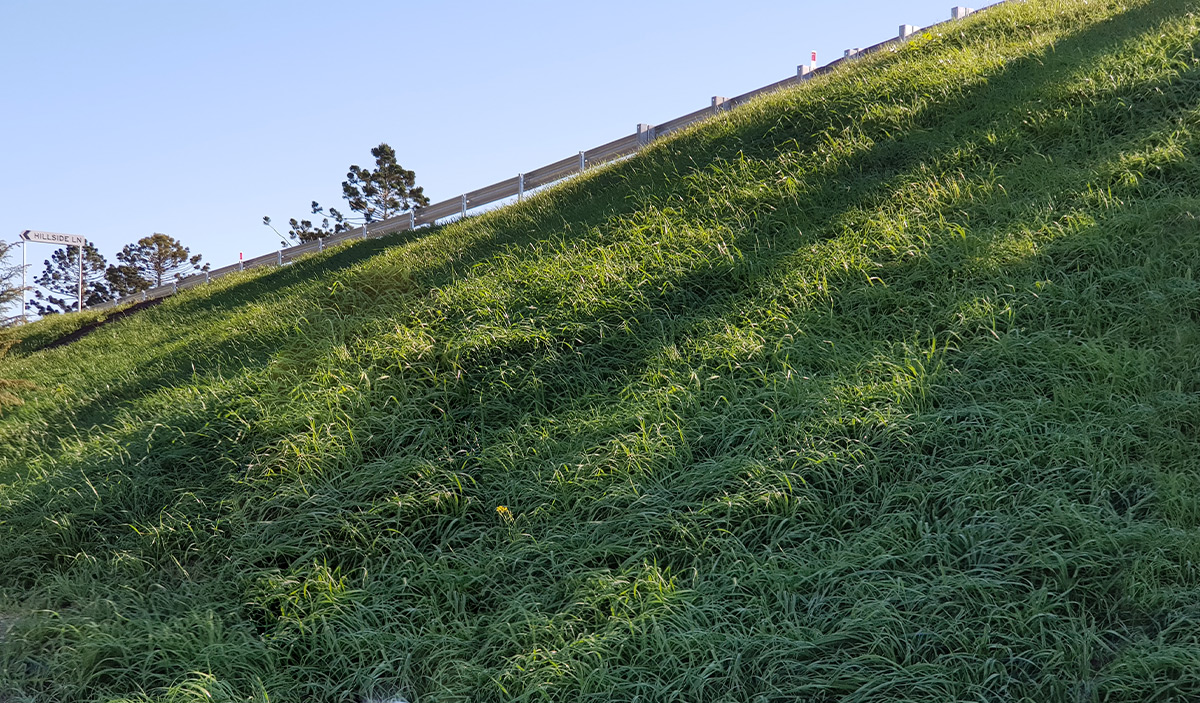
Growing vegetation on sloped land can be challenging, particularly without the correct preparations in place.
The successful revegetation of a slope requires an understanding of several factors influencing soil quality and stability, both of which are key to successful vegetation establishment with or without topsoil placement
The gradient and length of the slope ultimately determine whether it will be possible to apply topsoil and ameliorate the subsoil effectively.
Revegetation projects are inherently complex when attempting to establish vegetation and stop erosion on steep and long slopes. Water runoff in particular needs to be controlled and incorrectly prepared slopes that do not focus on slowing water flow down are at particular risk of failure.
As a rule, graded smooth cut compacted areas are very slow to establish vegetation at any gradient, putting them at greater risk of failure.
In order to stabilise the topsoil layer, all gradients should be roughened via track rolling, horizontal ripping or pin wheeling before seeding. This slows water flow, reduces water runoff and increases water absorption into the soil layer beneath the hydromulch, allowing vegetation to thrive with less frequent watering. Short and long-term, this improves slope stability and significantly enhances vegetation growth.
Processes like track walking, horizontal ripping and pin wheeling strengthen the bond between the topsoil layer and the subsoil below it, minimising slumping and rilling of the soil surface layer to optimise stability. These processes create a surface which is better for binding, allowing the binders in the hydromulch layer to hold onto the soil.
A process like back-blading delivers much smoother results, and although these results look nice, they work against the revegetation process by minimising water penetration and increasing water flow. The resulting erosion and rill formation due to the impact of rain and increased overland flow rates makes it difficult for EnviroStraw BFM hydromulch to deliver the intended results.
Watch the video below to see the results for yourself.
Are you preparing to revegetate a slope with a steep gradient? Contact our revegetation experts for professional advice that guarantees results.